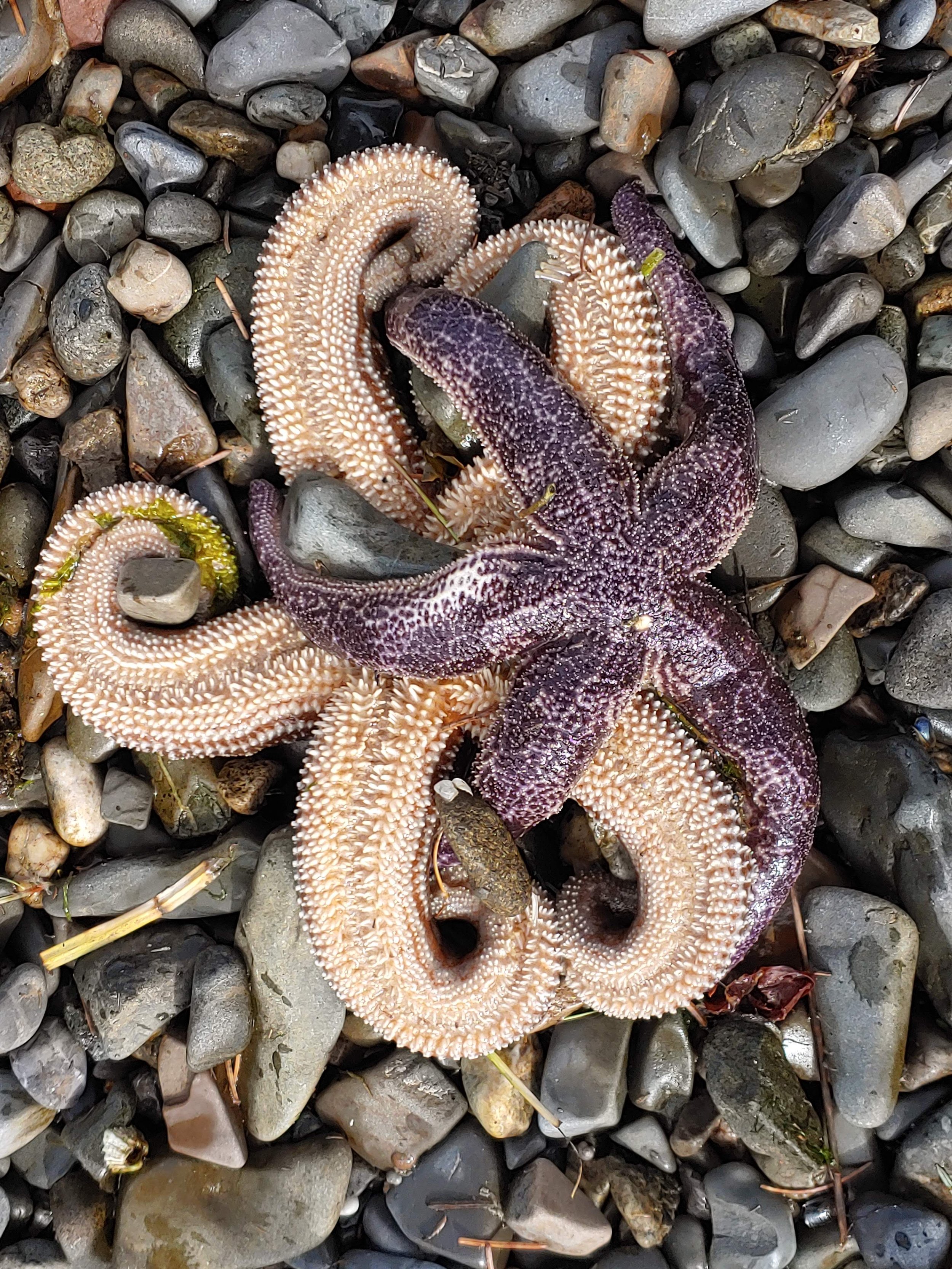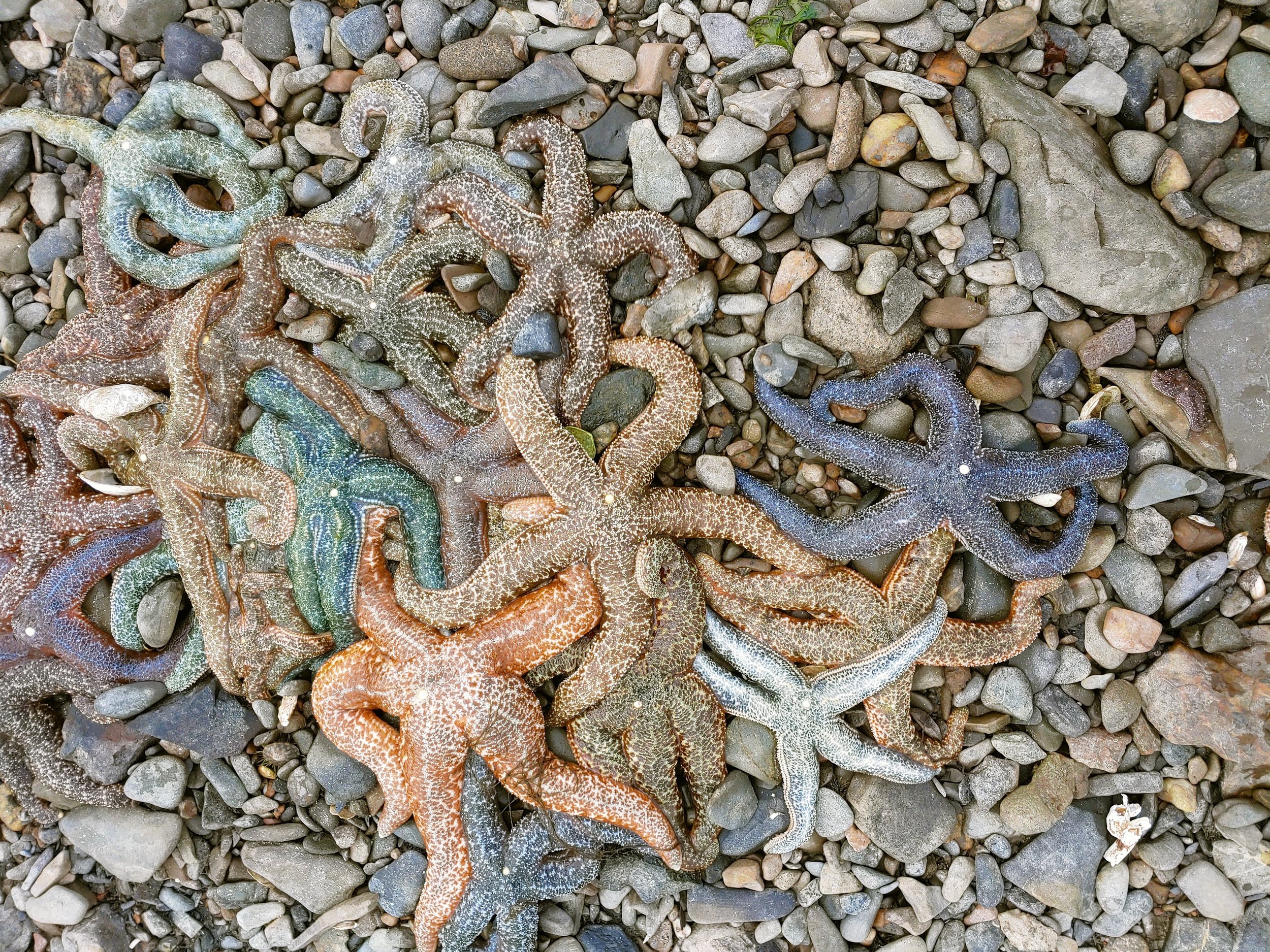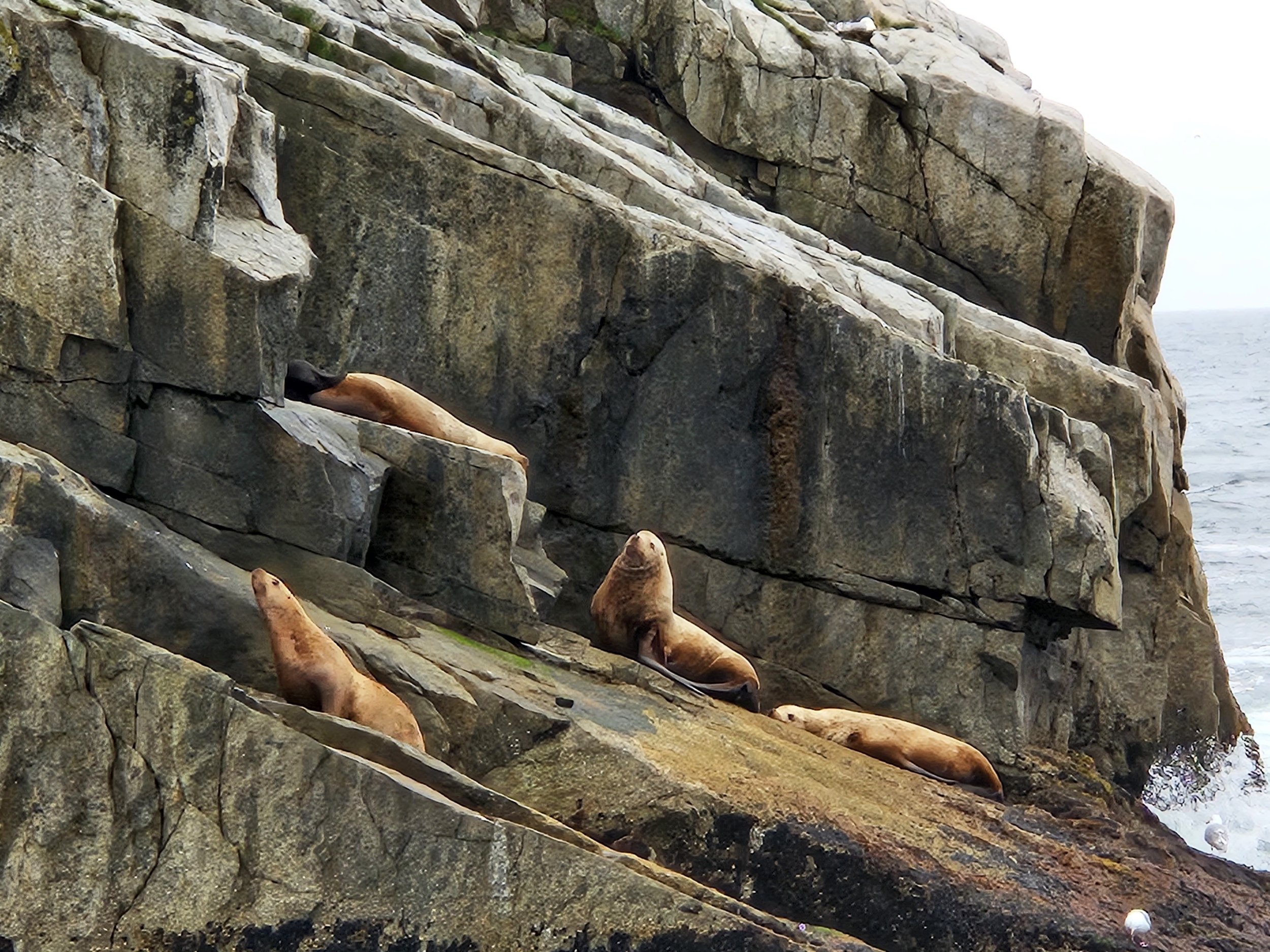Alaska, Part 2: Sea Lions, Kittens, and Bears—Oh My! On Calming our Fears
“Over there! Did you see it?”
A small crowd gathered at the edge of the dock peering out at the sea, waiting for the orca to surface again. After a moment, he raised his body halfway out of the water, landed with a splash, and disappeared. We all cheered and clapped and, after realizing the show was over, dispersed and boarded the ship.
We had just visited Icy Strait Point (a.k.a. Hoonah), where our day began with a beach walk at low tide. The colorful and textural array of sea stars (i.e. starfish), urchins, and other interesting sea life on the rocky shore was a wonder! Later in the day, when the tide had rolled in, they had all disappeared.
PC: J Swierenga
In Sitka, the next stop on our cruise, the wildlife du jour was bald eagles. We saw a plethora of these majestic birds soaring above us all day. At one point, I counted three overhead at one time.
In Seward, we boarded a smaller vessel for our tour of the Kenai Fjords, excited for more wildlife sightings. As we cruised along the rocky cliffs, we had close-up views of sunbathing sea lions. An agile one of around 700 pounds made a vertical climb using just the strength of his flippers! Several orca whales swam nearby and a humpback slapped the water repeatedly with his dorsal fins.
PC: G VanderLeek; B Swierenga
We “awww-ed” at the cute sea otters floating on their backs, some carrying babies, and “wow-ed” as puffins sped through the air skimming just over the water. A pod of four Dall’s porpoises danced in unison like synchronized swimmers going for an Olympic medal.
From the safety of our boat, we enjoyed this show of God’s wild and wonderful creation.
Unfortunately, some wildlife was elusive. I had hoped to see a bear, but the only ones we saw were a couple of rescued black bears at the Alaska Wildlife Conservation Center. Oh well. Next time.
Our wildlife encounters were amazing, exciting, and even cute. But we realized they could have been dangerous. A mama and baby moose camped out in front of our Homer Airbnb, and several friends reminded us not to approach—a mama moose can become aggressive when protecting her young. In fact, any wild animal can be a threat to humans when their protective instincts kick in. And so, we kept our distance.
Fear can be a good thing. It protects from danger, preserves life in the face of enemies, and keeps offspring safe from harm. While wild animals fear humans, it’s common sense for humans to fear wild animals as well.
Wildlife is just that…wild life. Our role is to respect, protect, and care for the creatures we share this earth with.
Upon returning home to Michigan, I witnessed a prime example of how “cute” does not equal “tame”, and “wild” can equal “dangerous”.
We pulled into the driveway after our 18-day absence and the first thing I wanted to do was walk around my gardens. I always miss them while I’m away, and the landscape changes a lot in two and a half weeks.
Unfortunately, the first thing I noticed was that another form of wildlife—likely deer—had eaten all the leaves off several of my hostas. Before even unpacking the car, I grabbed my deer spray from the garage and began coating the surviving plants with the stinky deer deterrent.
Rounding the house into the front yard, I quickly drew in a breath as a small furry animal scurried from under a plant toward the house. And then another. Two little kittens ran for protection under our front porch, slipping through a hole in the lattice and mesh.
Over the next couple of days, I would glimpse them on my porch or huddled behind our garden hose. I discovered there were four of them and their mama—a neighborhood stray—was nowhere in sight. Every time the kittens spotted me, they would dart under the porch for safety.
Since we’ve recently had a problem with feral cats reproducing in our neighborhood, we knew it wouldn’t be wise to just let these little ones go. And so began my journey of capturing, socializing, and fostering kittens.
These tiny critters were speedy! To capture them, my husband set an elaborate trap that kept them from running under the porch. With that and the use of our live trap, we caught three of the four. Boots and Cocoa, the adorable calicos, and Cookie, the long-haired white and tan beauty, took up residence on our back screen porch. The little black one, who I coined “Bear,” remains elusive, just like his Alaskan counterparts.
One would think a kitten would be all sweet and cuddly from the get-go, but these cute little fur-balls were vicious! IF we could catch them—they hid behind and under every piece of furniture—they hissed and screamed, baring their teeth and scratching with their claws. We learned that heavy work gloves were a must for this job, and that socializing kittens was exhausting!
Several times I had to remind myself the kittens weren’t being mean and nasty. They were just scared to death. We had removed them from their safe place, taken them from their mama (who did eventually show up), and bombarded them with unfamiliar sights, sounds, smells, and sensations. Their fear overwhelmed them.
Once we caught them and held them close, they calmed down. Within a couple of days, they stopped scratching and screaming. Then they stopped hissing when we approached. They still ran away, but eventually, we could catch them more easily and hold them. When they began to purr, our hearts melted.
Their fear was protective and instinctual. But in letting down their guard and trusting us, they received many benefits—food, shelter, cuddling, and love.
Our neighbors adopted Cocoa after a week. Cookie and Boots traveled with me to our Minnesota cabin, where they again had to acclimate to new surroundings, as well as to our big cat Migizi (who had to learn some tolerance as well). They are all doing well.
As I wrote this story, I struggled with the slant. Was it about Alaskan wildlife? (I had promised my readers more Alaska stories.) Or about wildlife being dangerous? (That’s a fact.) Or our responsibility in caring for wildlife? (Also important.)
But as the week went on, God nudged me. Three times I read something about fear. The first two were in my Pray as You Go app. Exodus 1 told how the Egyptians feared the Israelites were becoming too numerous and might overtake them. So they became hostile toward the Israelites and enslaved them. If they had had claws, I’m sure they would have used them against their “perceived” enemies.
Then, in Exodus 3, Moses stood in front of the burning bush, asking God how in the world he was qualified to lead the Israelites out of Egypt. If there had been a hiding place nearby, I bet he would have scurried under it.
But God said, “I will be with you.”
Finally, in the book Lakeside Retreat, the author (Marci Seither) tells the story of teaching her friend’s daughter to overcome her fear of swimming. The more time they spent together in the water, the more the little girl trusted Marci, realized she was safe, and learned to swim.
Likewise, the more time I spend with my kittens, the more they’re learning to trust me. It’s been a month now and socialization continues. Boots still runs and hides under furniture when she sees me, but eventually lets me pick her up. Cookie approaches me with complete trust and loves to crawl all over me. As trust builds, their fears have calmed and their wild tendencies have faded.
What do we fear? Are they genuine dangers, or do they come from a lack of understanding, experience, or familiarity?
Are we being asked to step out of our comfort zone? To take on a new task, adventure, or relationship? Who can we spend time with to build trust that replaces our fears?
This week, I challenge you to identify a fear you are facing that interferes with your ability to live your best life. Then, calm your fear with trust—in yourself, others, and God. A wild and wonderful adventure awaits you!
If you’re feeling really brave, take a minute to share your thoughts by leaving a comment below!
(This story was originally published on 7/22/23, at lindahanstra.substack.com.)





